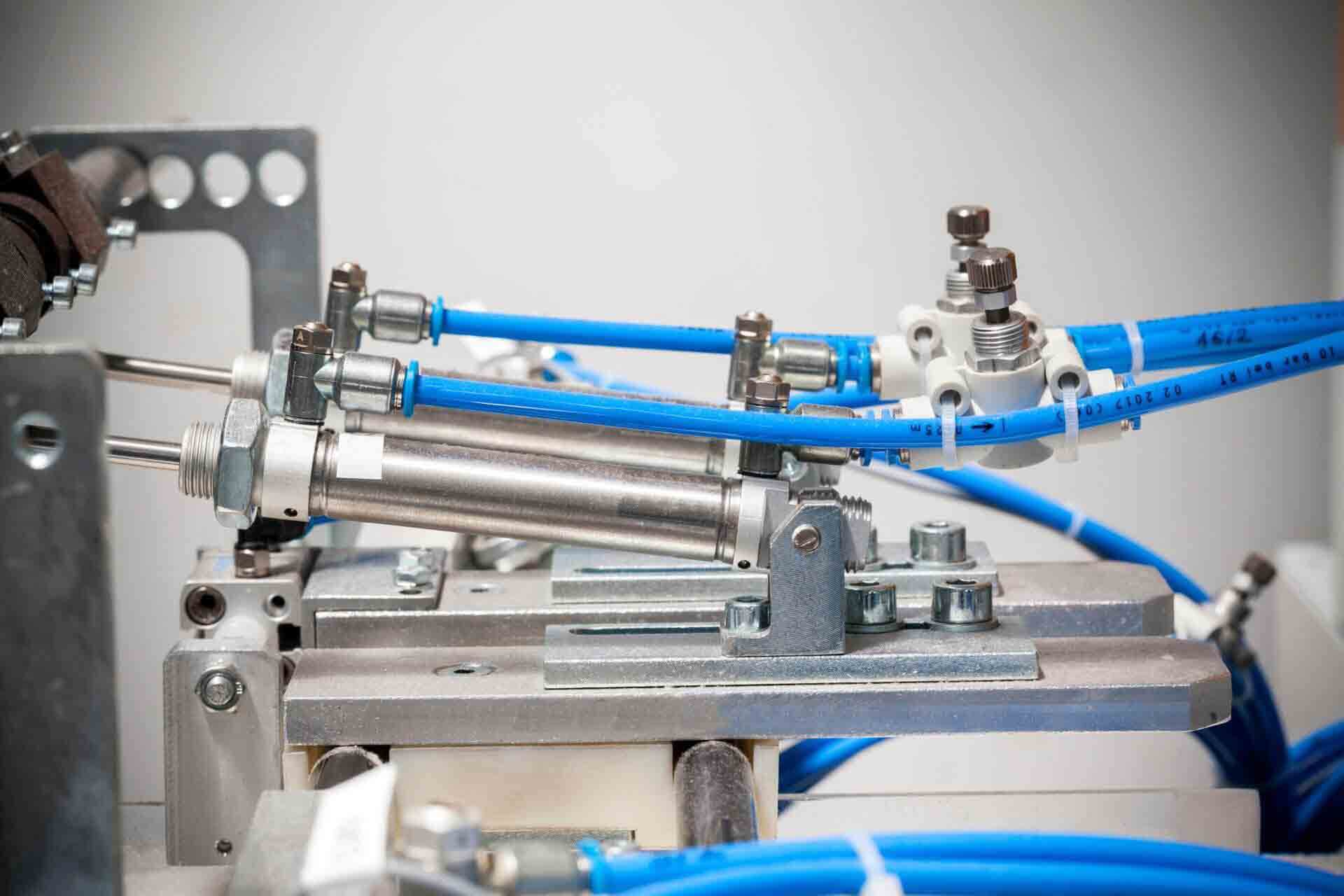
Modern manufacturing processes utilize both hydraulic and pneumatic systems to generate mechanical energy. These types of systems use liquids and gases, respectively, to provide many different types of machinery with power and precision. The effective management of compressed air and hydraulic oil is critical for efficiency, safety, and product quality in the industry.
What exactly is the purpose of fluid control in manufacturing? How does it work? What specific technologies are used in the processes? Keep reading to learn more. Discover why successful manufacturing processes rely extensively on precise fluid control.
Note that, in this case, the phrase “fluid control” refers to the use of both liquid and gas to generate power.
Using Fluids in Manufacturing
Machines used in manufacturing must be able to achieve sufficient speed and power to perform their tasks effectively. The mechanical energy generated by Pascal’s Principle is the best way to accomplish this.
Pascal’s Principle is a physical law that states that any increase in pressure on a fluid or gas in an enclosed space creates an equal increase in pressure in every other area of the container. This means that when a liquid or gas is pressurized using a pump, that fluid or gas exerts a powerful force on a piston or cylinder built into the mechanism. This, in turn, generates the linear or rotational motion required for mechanical systems to perform their work.
When a pressurized gas is used in machinery, it’s considered a pneumatic system. Pneumatic systems primarily make use of air as a medium. They are best for machinery that must operate with great speed or complete repetitive tasks, such as the robotic lifting arms used on assembly lines.
When maximum strength and precision are required, hydraulic systems are typically employed. They use a pressurized liquid, usually oil, to perform tasks. Equipment that performs heavy lifting, such as forklifts and cranes, usually uses hydraulics to operate.
Go With the Flow
The key to the success of any hydraulic or pneumatic technology is an effective fluid control system. The flow of liquids and gases must be managed precisely to achieve the desired results: When an operator activates the controls of the machinery, the fluid/gas controls the speed, motion, and power of the internal components.
The controls of hydraulic and pneumatic machines use valves to regulate the movement of their fluid medium. Frequently, fluid control systems used in manufacturing are solenoid valves, which open when an electrical signal is delivered and close when that same signal is removed. This electrical signal is provided by the control system of the machinery, which is either managed by a human operator or automated, depending on the need.
Some valves used in fluid control systems can operate without an electrical current. One type, the air pressure valve, is common in pneumatic systems. When the pressure is increased by the operator, it acts on the walls of a diaphragm, forcing the valve to open.
Working Under Pressure
One of the key purposes of a fluid control system in manufacturing is to maintain the required pressure levels for the machinery to operate at maximum efficiency. These pressure levels are measured by sensors installed within a system and can help operators ensure the system operates within safe parameters.
Since it is the fluid pressure that provides the mechanisms in the systems with the energy they need to move, a failure to generate the required pressure—or a pressure loss after the fact—weakens the ability of the system to perform its work. An effective fluid control system, therefore, must be composed of multiple elements:
- Pump: A pump that is powerful enough to create the necessary pressure to operate the system in the first place is vital. This pump may be powered by an electric motor or a gasoline or diesel engine.
- Reservoir: The system must include a reservoir to hold the fluid medium. Pneumatic systems may have a compressed air tank for this purpose, while hydraulic oil, which is incompressible, is usually contained within a tank that allows for heat dissipation, contaminant settling, and fluid conditioning.
- Relief Valve: More complex systems may use a relief valve to help maintain a safe operating pressure. This device is designed to prevent excessive pressure buildup, ensuring a safe and reliable operation. Relief valves also help extend equipment life by maintaining the appropriate system pressure.
Take the Heat
As many manufacturing technologies operate in extreme conditions, another purpose of a fluid control system is to maintain a working temperature. Maintaining the right temperature helps protect the system and ensure product quality isn’t affected by excessive heat. To manage temperature, the first step is to ensure the fluid used in the system is rated correctly for the application. A fluid with the wrong viscosity could create friction and overheat the system.
Fluid control in pneumatic systems is also heavily dependent on a consistent temperature. The reason differs from hydraulic systems in the sense that the compressed air used in a pneumatic system can contract or expand depending on the ambient heat. The temperature also affects the amount of moisture in the air, which can impact the system’s ability to operate. Well-built pneumatic systems account for this, sometimes by using cooling systems to eliminate excessive heat.An effective fluid control system is composed of multiple elements working in harmony to ensure safety, efficiency, and product quality. Ideally, each part of the system should be constructed and maintained by the same manufacturer, ensuring they are compatible with one another. Contact Aberdeen Dynamics to have such a system constructed to meet your business’s needs. Let us design a custom fluid control system for your needs to help take your production processes to the next level.